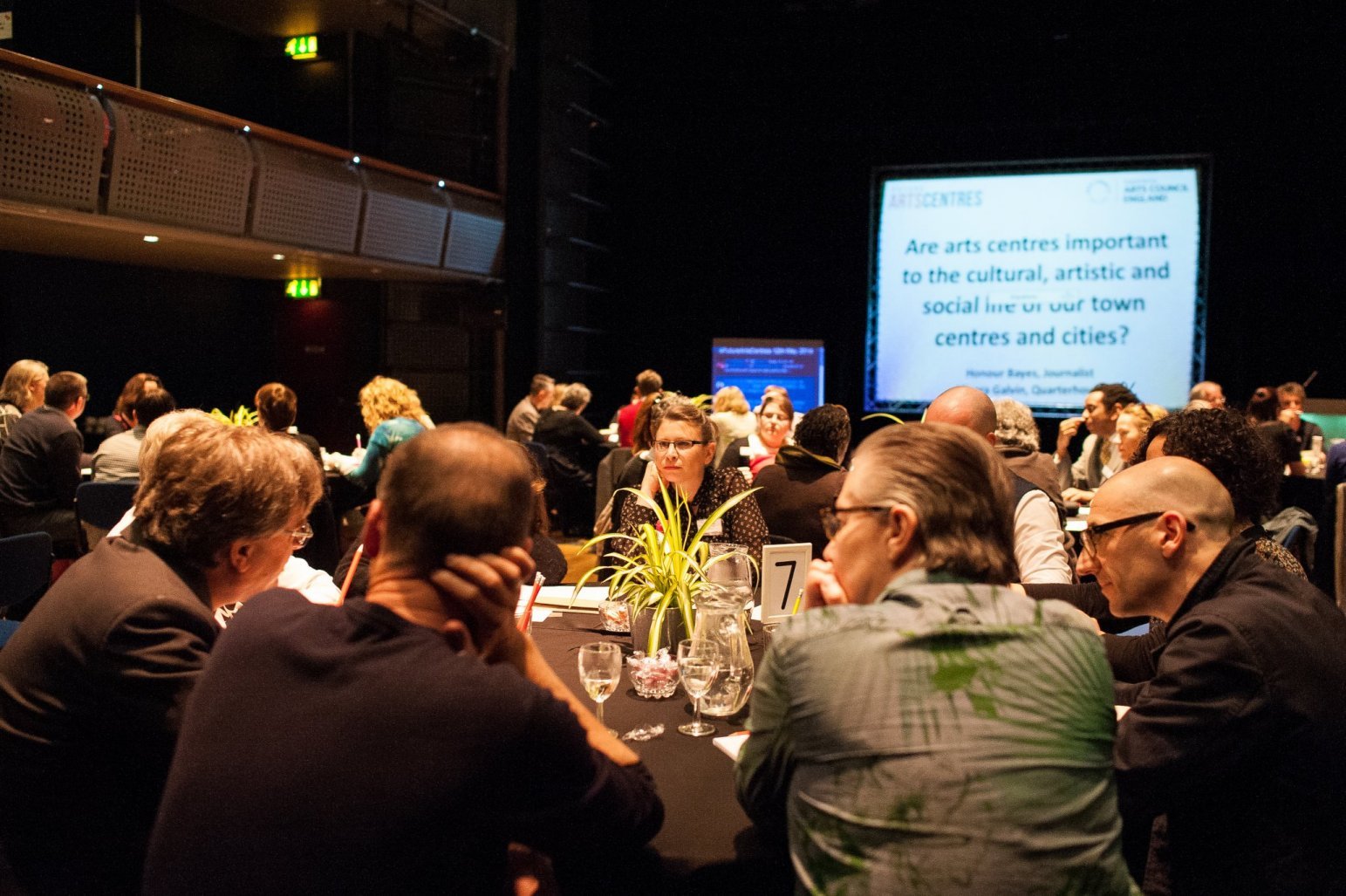
No longer the poor cousin
Gavin Barlow and Clare Connor argue that arts centres occupy an important place in our cultural, artistic and social life.
Arts centres have often been seen as the poor cousin of theatres and other arts spaces, offering a less valuable creative experience. The complex nature of the organisations and the work that goes on within their walls means the arts centre story is less digestible and does not receive the media attention it deserves. The absence of a strong voice, in terms of industry figureheads and networking bodies, has allowed other areas of the creative industries to dominate the agenda.
To address this problem, 50 arts centre leaders came together from across the country for Future Arts Centres on Monday 12 May. We were there to ask if arts centres really are important to the cultural, artistic and social life of our towns and cities, and to explore the challenges currently facing arts centre leaders and the opportunities for their future.
The focus of the conversation was not on defining what an arts centre is. Rather our focus was exploring what defines a good arts centre. As Allegra Galvin from Folkestone Quarterhouse highlighted, arts centres are not intrinsically important. They only work when they are at the centre of a community and matter to people, and they only make a real difference when they bring artists into the centre of that relationship with audiences. Arts centres are then able, as journalist Honour Bayes put it: “To make culture the beating heart of the community.”
Participation is at the centre of everything we do, and we are not constrained by artform at a time when these categorisations seem less and less relevant
There was a reminder from Jude Kelly that the history of the arts centre movement was a political one. At its core it was about social change through the democratisation of culture. There was a call for arts centres to look for new frontiers of change, and when appropriate, to state clearly that social progress is part of our mission. The room was full of evidence that arts centres play a pivotal role in influencing change locally, acting as drivers for change across the arts, but also taking a role in being a catalyst for change more widely.
The benefits of coming together as a group were widely articulated, as was the need for much greater advocacy for the work we do and the pivotal position that art centres could occupy. There was a strong focus on the particular role that artistic leaders play in our organisations. No one is able to be an expert across artforms and social structures, but instead of being a jack of all trades, a successful arts centre leader is a curator, bringing together multiple voices and making cohesive sense of a diversity of elements. As Alison Clark-Jenkins from Arts Council England said, quoting Kevin Kruse: “Leadership is a process of social influence which maximises the efforts of others towards the achievement of a goal.” We will guarantee the quality of our work if we can make the most of our networked creative and social influence to make change happen.
Alison also asked in her provocation: “Do we revel in our hybridity?” The strength and relevance of arts centres is the diversity of our offer and the many points of access offered to new audiences. Participation is at the centre of everything we do, and we are not constrained by artform at a time when these categorisations seem less and less relevant. Collaboration is in the DNA of most arts centres, working not just across artforms, but across sectors and with a variety of business and community partners. This could provide what Dave Moutrey from Home suggested is arts centres’ strategic advantage: the fact that our product is differentiated, that we can interrogate ideas with a variety of artists across media, build social spaces, engage audiences through a range of artistic gateways, and create rich experiences that take advantage of the innovation existing in the spaces between traditional artforms. As he warned, we should avoid the idea that we can provide something for everyone, a temptation that can compromise quality, leading to producing ‘beige’, and inevitably resulting in arts centres’ work fading into the background.
There was a palpable sense that now is the time for arts centres. The things being asked of the arts – collaborative-working, dynamic business models and audiences that cross social boundaries – are already embedded in the practice of most arts centres. As Andy Howell from Birmingham Arts Partnership suggested, our accessibility and diversity, combined with artistic excellence, make arts centres adaptable to change. Arts centres provide a bridge to wider communities and are essential to building the successful creative towns and cities of the future. Of course, there are myriad challenges, as Dorothy Wilson from mac birmingham clearly detailed, but the opportunities are there if, as Dave Moutrey stated, we are clear about our purpose, how we add value, focus on ideas and do it well.
The event will give rise to a report appraising the outcomes and laying out actions to be taken as a result. The outcomes of this report will be shared through the website, along with a blog profiling thought leadership from arts centre CEOs.
Honour Bayes’ call to action resonates loudly as we look to what comes next: “It’s time that you begin leading the cultural conversation, not staying on the margins of it. We need to show that the work you’re doing is not just social or cultural, it is inherently both.”
Gavin Barlow (The Albany) and Clare Connor (Stratford Circus) are Co-Chairs of National Partnership of Arts Centres.
futureartscentres.org.uk
Join the Discussion
You must be logged in to post a comment.